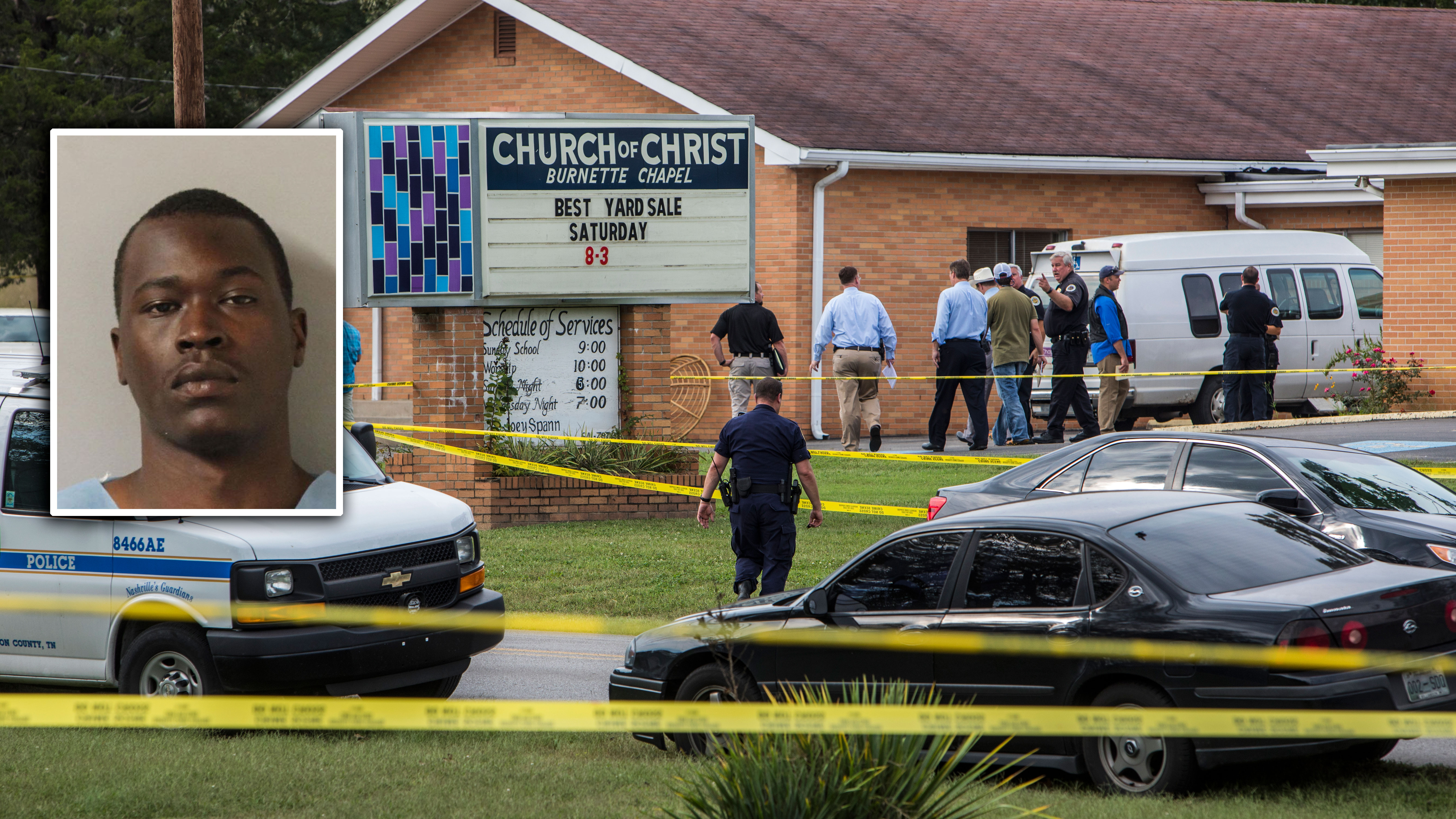Since the SPLC’s warning in August, another violent black nationalist has carried out a mass shooting attack against whites. This time, a predominantly white congregation was attacked at their place of worship.
On Sunday, September 24, 2017, Emanuel Kidega Samson, a Sudanese immigrant, arrived in the parking lot of the Burnette Chapel Church of Christ in Antioch, Tennessee, armed with an assault rifle and semi-automatic pistol, his face concealed by a ski-mask. Upon exiting his blue Nissan Xterra, Samson immediately shot Melanie Crow Smith, a 38-year-old mother of two children, who had just left the Sunday worship service. (Smith later died from her wounds). Samson then proceeded to the rear entrance of the church.
As he entered the church, Samson began firing randomly at the white churchgoers. Among those shot were Pastor Joey Spann, his wife and four others. As shots rang out, Parishioner Robert “Caleb” Engle ran toward them. Engle confronted the gunman and suffered severe wounds to his face as he struggled to disarm Samson. During their struggle, the gunman reportedly was shot in the chest. Engle then ran to his car and grabbed his personal handgun which he held as he guarded the wounded gunman until police arrived. Samson and his surviving victims were transported to Vanderbilt University Medical Center in Nashville.
Authorities estimate there were approximately 42 people inside the church at the time of the shooting. Investigators later found a handwritten note inside Samson’s vehicle that made reference to seeking revenge for the 2015 Charleston massacre carried out by self-proclaimed white supremacist, Dylann Roof. After the Charleston attack, law enforcement authorities worried about possible retaliation or revenge attacks. Samson’s note suggests a possible motive for his violent attack against white men and women worshipping at church.
A review of Samson’s Facebook account also revealed sympathies, interest and possible ties to black nationalist groups, such as the New Black Panther Party and the Nation of Islam. Samson’s Facebook photo page included a picture of the raised fist featuring the eye of Horus (e.g. Egyptology) which is a well-known black power symbol. Samson also posted images of armed New Black Panther members and the Anonymous hacking group. Most concerning, Samson reposted numerous videos from prominent black nationalists on YouTube such Ankh Ma’at Ra and Sa Neter, both associated with the “House of Konsciousness Movement.” (These videos have since been removed from Samson’s Facebook account). Ra and Neter’s videos promote a broad range of black nationalist and pan-African ideology — some of which is linked to the New Black Panther Party, Black Hebrew Israelites, Moorish Nation, the Nation of Islam and other radical black nationalist groups. Some of Samson’s postings also involved prominent conspiracy theories, such as the New World Order, illegitimate taxation and illegal wars in Afghanistan and Iraq, as well as hatred towards police.
As a result of Samson’s note, social media activity and violent ethnic targeting, the Federal Bureau of Investigation and U.S. Department of Justice have opened civil rights investigations into the Antioch church shooting.
This latest shooting comes almost a year after another unprovoked attack against whites in Bristol, Tennessee, on July 7, 2016. On that day, Lakeem Keon Scott, a black Army veteran, began shooting indiscriminately at passing cars along a Tennessee highway. One woman died and three others, including a police officer, were injured during the attack. All of the victims were white. Scott, who was later shot by police, subsequently told investigators he was angry about the ongoing police violence against African-Americans in other states. Although he has no known ties to black nationalist groups, Scott certainly espoused racism and hatred toward police which motivated him to target whites during his shooting rampage.
In an article entitled “Return of the Violent Black Nationalist,” published in August, the SPLC warned that the number of black nationalist groups in the United States had jumped dramatically from 48 groups in 2000 to 193 in 2016. The SPLC also noted several black nationalist shootings including attacks in Fresno, Dallas and Baton Rouge, in addition to police ambushes in other states. The SPLC further stated that “the U.S. has not experienced this level of violent black nationalism in nearly 40 years.” Both of these attacks in Tennessee exemplify the continued threat of violent black nationalists in the U.S.
Metro Nashville Police and Joe Buglewicz/Getty Images

